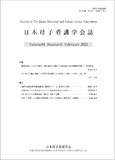Japanese
English
- 有料閲覧
- Abstract 文献概要
- 参考文献 Reference
抄録
【目的】新たに作成した『産科有床診療所事業継続計画策定ガイド』(以下、産科診療所BCPガイド)の有用性を評価し、今後の有効活用について示唆を得ること。
【対象と方法】産科有床診療所BCPガイドの印象、収録内容に沿った検討・記載の実行可能性を問う自記式質問紙調査による量的記述的研究である。配布・回収は郵送にて2022年4〜5月に実施した。対象は、南海トラフ巨大地震による推計死者数1万人以上の9県に所在の産科有床診療所のうち、基礎調査に参加し同ガイド送付を希望した44施設である。同ガイドの印象4項目、収録内容に沿った検討・記載の実行可能性8項目について、t検定とMann-WhitneyのU検定にて“BCPあり群”と“BCPなし群”の2群間比較を行った。
【結果】15施設から回答を得た(回収率34.1%)。“BCPあり群”は7施設、“BCPなし群”は8施設であった。産科有床診療所BCPガイドの印象の総和平均は13.06、収録内容に沿った検討・記載の可能性の総和平均は27.00であった。同ガイドの印象「実際にBCP策定に使ってみようと思える」は、“BCPあり群”平均3.57、“BCPなし群”2.75と有意差を認めた(p=0.029)。収録内容に沿った検討・実行可能性では“BCPあり群”28.71、“BCPなし群”25.50と有意差を認めた(p=0.048)。「「BCPの運用」は現実的に実行可能な内容である」は、“BCPなし群”の平均2.75と8項目中最小であり、“BCPあり群”の平均3.43との差は有意ではないが最大であった。
【結論】産科有床診療所BCPガイドの装丁・構成・内容は概ね妥当である。今後、策定・運用の積極的姿勢・行動喚起には、BCP策定のメリットが可視化できる項目の追加、省資源での取り組みや活用法の検討、妊産婦の教育機会創出、災害を実感できる試みと併せた提供が必要である。
【Purpose】 To evaluate the usefulness of the newly created "Guide for Development of Business Continuity Plans for Obstetric Clinics with Beds" (BCP guide) and to clarify the direction of effective use of the guide.
【Methods】 This study is quantitative and descriptive in nature; it was conducted using a self-administered questionnaire survey to obtain people's impressions of the BCP guide and the feasibility of examining and describing each procedure to develop the business continuity plans (BCPs) in the guide. It was conducted by mail in April-May 2022. Among all the obstetric clinics located in nine prefectures along the Nankai Trough that handle childbirth and wish to obtain a BCP guide, 44 facilities that had participated in the prior basic survey (November-December 2020) were selected. The data were split between "Group with BCP" and "Group without BCP." The two groups were compared using the student's t-test and the Mann-Whitney U test.
【Results】 Responses were received from 15 of the 44 target facilities (34.1%). On average, the values of the impressions of BCP and the feasibility of examining and describing each procedure to develop BCPs in the guide were high (13.06 and 27.00, respectively). Considering the impression, “I think I will actually use the BCP guide,” for “Group with BCP,” the average was 3.57, whereas it was 2.75 for “Group without BCP.” This shows a significant difference (p=0.029) between the groups. For the feasibility of examining and describing each procedure to develop BCPs, there was a significant difference between the “Group with BCP” at 28.71 and the “Group without BCP” at 25.50 (p=0.048). In response to "I think I can consider and describe BCP management," the mean response of the “Group without BCP” was 2.75, the lowest among the eight items, and the difference with the “Group with BCP” was the largest, although not significant.
【Conclusions】 The format, composition, and contents of the BCP guide are generally appropriate for developing a BCP. In order to evoke a positive attitude and action to develop and manage a BCP for facilities that are not familiar with it, it is necessary to add content that can visualize its merits. BCPs can be utilized to find more resource-saving approaches, create educational opportunities for expecting mothers, and enhance opportunities to identify disasters that have never been experienced before.
Copyright © 2023, The Japan Maternal and Infant Caring Association All rights reserved.


